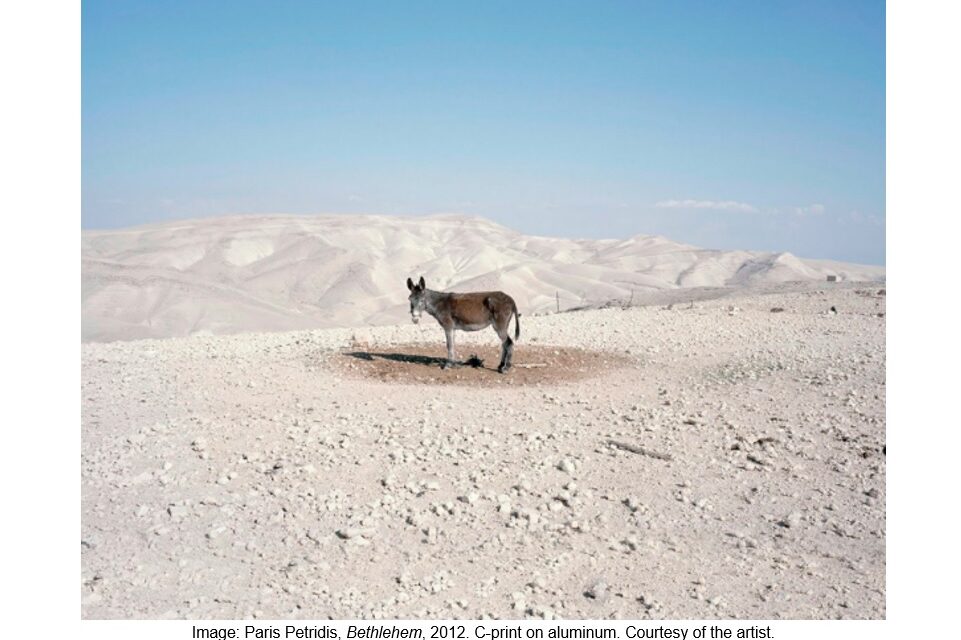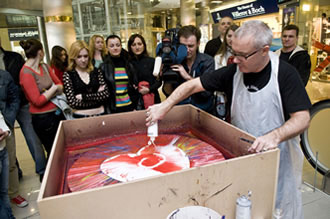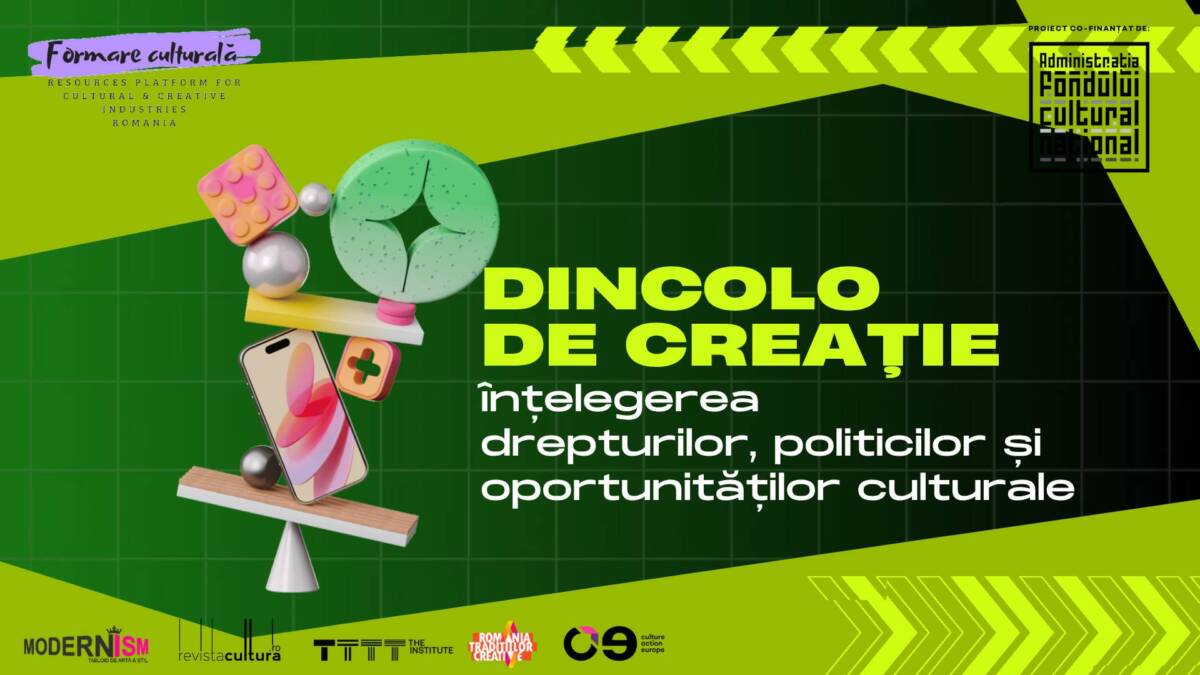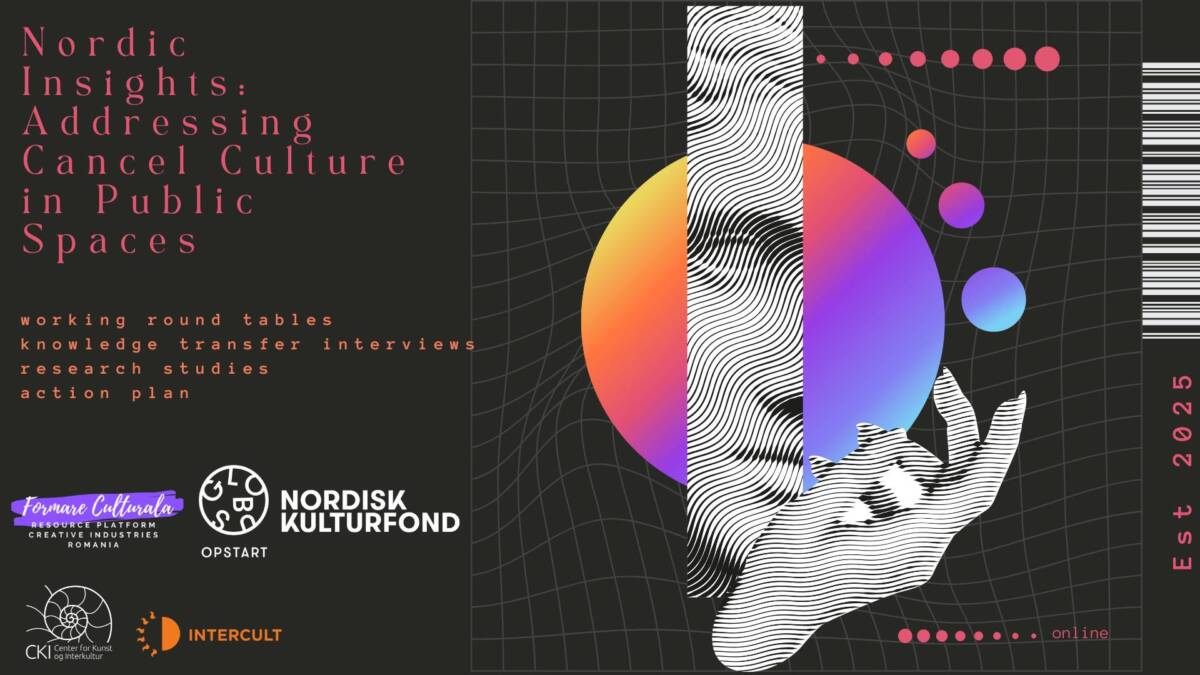If you travel in Athens, Greece, we recommend visiting this exhibition.
WHY LOOK AT ANIMALS? A CASE FOR THE RIGHTS OF NON-HUMAN LIVES
Curated by Katerina Gregos
These projects are all part of the National Museum of Contemporary Art, Athens’ 2025 programme, Why Look at Animals?
ΕΜΣΤ | National Museum of Contemporary Art, Athens, is proud to announce the inauguration of its ambitious new flagship exhibition Why Look at Animals? A Case for the Rights of Non-Human Lives which officially opens on 15 May 2025 and runs until 7 January 2026.
Unlike exhibitions that simply explore the role or representation of animals in art history, Why Look at Animals? A Case for the Rights of Non-Human Lives breaks new ground as the first major exhibition to offer a profound ethical and philosophical exploration of humanity’s complex, fraught and often contradictory relationship with animals — potentially the largest group exhibition on this subject ever presented.
Curated by ΕΜΣΤ’s artistic director, Katerina Gregos, and extending across seven floors of the museum, the exhibition draws inspiration from John Berger’s seminal 1980 essay, Why Look at Animals?, reflecting on how animals have been marginalised and rendered invisible in human societies, and the moral imperative of rethinking our relationship with them.
Works by over 60 artists will place the spotlight on the lives, rights, well-being and sentience of animals, while addressing urgent ecological and ethical questions surrounding the human-animal relationship and exploring themes such as animal intelligence, speciesism, ecological interconnectedness, animal exploitation and the human-animal divide in the context of modernity.
ΕΜΣΤ’s artistic director and exhibition curator, Katerina Gregos notes:
“This exhibition raises the urgent issue of the necessity of defending non-human life. It aims to engender a discussion about the systemic injustices that animals suffer at the hands of humans while also acknowledging animals as not separate from – but integral to – our biosphere and ecosystems. Climate change, pollution, industrial ‘factory’ farming, war, destruction of natural habitats, experiments on animals, neglect of domestic animals all have a dramatic impact on animals and their habitats. Speciesism – our idea that humans are superior to all other living creatures and have greater rights – has justified the widespread, violent exploitation, even as advances in animal studies reveal that animal intelligence and capacities are often superior to our own. If we seriously want to engage with climate justice and environmental protection, animals form an integral part of the dialogue. It is an ethical imperative to re-examine our relationship with those non-human beings with whom we co-habit the earth, to imagine new forms of inter-species coexistence, and to acknowledge animal intelligence as different but not lesser than our own.”
With exhibition design by FLUX Office, Athens (Thansis Demiris, Eva Manidaki and Dimitris Zampopoulos), Why Look at Animals? A Case for the Rights of Non-Human Lives features over 60 artists from across the globe, including:
Ang Siew Ching (Singapore), Art Orienté Objet (Marion Laval-Jeantet & Benoit Mangin, France), Sammy Baloji (Democratic Republic of Congo), Elisabetta Benassi (Italy), John Berger (UK), Rossella Biscotti (Italy), Kasper Bosmans (Belgium), Xavi Bou (Spain), Nabil Boutros (Egypt), David Brooks (USA), Cheng Xinhao (China), David Claerbout (Belgium), Marcus Coates (UK), Sue Coe (UK/US), Denicolai & Provoost (Italy/Belgium), Mike Dibb & Chris Rawlence (with John Berger) (UK), Mark Dion (USA), Radha D’ Souza (India), Jakup Ferri (Montenegro), Alexandros Georgiou (Greece), Igor Grubić (Croatia), Laura Gustafsson & Terike Haapoja (Finland), Joseph Havel (USA), Lynn Hershman Leeson (USA), Annika Kahrs (Germany), Menelaos Karamaghiolis (Greece), Anne Marie Maes (Belgium), Britta Marakatt-Labba (Sweden), Nikos Markou (Greece), Angelos Merges (Greece), Wesley Meuris (Belgium), Tiziana Pers (Italy), Paris Petrides (Greece), Janis Rafa (Greece), Minna Rainio & Mark Roberts (Finland), Marta Roberti (Italy), Mostafa Saifi Rahmouni (Morocco), Lin May Saeed (Iraq/Germany), Panos Sklavenitis (Greece), Jonas Staal (Netherlands), Daniel Steegmann Mangrané (Spain), Oussama Tabti (Algeria), Emma Talbot (UK), Nikos Tranos (Greece), Maria Tsagkari (Greece), Dimitris Tsoumplekas (Greece), Maarten Vanden Eynde (Belgium), Euripides Vavouris (Greece), Kostis Velonis (Greece), and Driant Zeneli (Albania).
Sonic Space
A guest-curated project by Joanna Zielinska, chief curator at M HKA, Antwerp, immerses visitors in the remarkable languages and sounds of animals – birdsong, whale calls, primate sounds, and even the hum of laughing rats, alongside bee dances and inaudible frequencies through the work of sound artists, scientists and researchers – in a specially designed environment inside the exhibition. Artists include: Dimitris Batsis, Kathy High, Jonas Gruska, Panayiotis Kokoras, Lisa Schonberg, Dr. Roger Payne, Andrew Spirou, Dimitris Tsoumplekas & Georges Salameh, Jana Winderen and Peter Zinovieff.
While Why Look at Animals? A Case for the Rights of Non-Human Lives serves as the programme’s centrepiece, a number of solo exhibitions, projects, public installations, screenings and public events broaden its scope, fostering a museum-wide dialogue on moral, ethical, ecological, and political questions surrounding animal rights and justice.
An overview of the programme:
Sammy Baloji: Echoes of History, Shadows of Progress |Until 2 November 2025
A powerful exhibition of installations, video works, and photography exploring the colonial legacies and continued exploitation in the Democratic Republic of Congo.
Kasper Bosmans: The Fuzzy Gaze | Until 15 February 2026
A vibrant 30-metre installation that investigates shifting animal-human relationships, blending regional folklore and heraldic references with playful artistic narratives.
Janis Rafa: We betrayed the horses | Until 5 October 2025
An installation and new film works explore themes of betrayal, control, and intimacy between humans and horses, reflecting on exploitation and non-consensual relationships.
Emma Talbot: Human/Nature | Until 15 February 2026
A monumental painted silk installation and animation film examine human-nature entanglements, offering imaginative alternatives through the eyes of non-human beings.
Octopus, the EMΣΤ magazine, Issue II
The second issue of Octopus, the thematic, bilingual, art criticism and theory journal published by EMΣT, will also be dedicated to non-human lives. The guest editor is the writer and curator Filipa Ramos, one of the key figures in the study of the cross-section between art and ecology. Octopus will complement Why Look at Animals? A Case for the Rights of Non-Human Lives with anthropological, narrative, poetic orientation with original texts by prominent Greek and international writers. In addition, Octopus Garden, the experimental, archival section of the magazine, will host autonomous sound, visual and textual works related to non-human life. The issue will be published at the end of June.
Why Look at Animals? A Case for the Rights of Non-Human Lives is accompanied by an illustrated and bilingual (English–Greek) catalogue and an exhibition guide designed by Schema. The exhibition opens on 15 May 2025 and runs until 7 January 2026.
ΕΜΣΤ Athens is one of the few museums in the world to allow pets, who are welcome to visit the exhibitions with their owners.
For further information, please contact:
International press
Amanda Kelly, Pickles PR Vanessa Saraceno, Pickles PR
National Press
Marigo Siakka, EMΣT Maria Tsolaki
[email protected] [email protected] |
ΕΜΣΤ | National Museum of Contemporary Art, Athens is funded by the
Hellenic Ministry of Culture
The exhibition Why Look at Animals? is co-financed by ESPA 2021–2027 in the framework of the approved project “ΕΜΣΤ Exhibition 2025–2026” with MIS code 6018632

Curated by Katerina Gregos
15 May 2025 – 7 January 2026
Floors 1, 2, 3 and 4
“If animals believed in God, the Devil would look like a human being.”
– Sue Coe
Why Look at Animals? A Case for the Rights of Non-Human Lives is a major international group exhibition featuring over 60 artists across seven floors of the museum. Inspired by John Berger’s seminal 1980 text, the exhibition examines the animal-human relationship during modernity and the marginalisation of animals in human societies. It highlights the pressing need to defend non-human life, which continues to be disregarded by politics, business, industry, agriculture and, often, the entertainment industry as well. By exposing the exploitative mechanisms of systemic animal abuse, the exhibition seeks to render the invisible visible and engender conversations about the ethics of how we treat animals.
The show highlights how animals are integral to our biosphere and ecosystems rather than separate from them. Climate change, pollution, habitat destruction, industrial farming, animal testing, and species exploitation all have a devastating impact on animals. The pervasive belief in human superiority—speciesism—has justified the violent commodification and use of animals. Yet, recent advances in animal studies reveal that animals possess intelligence and capacities that are often superior to human abilities, though different in nature. A serious engagement with climate justice and environmental protection must therefore include animals as part of the conversation.
As Berger noted, animals were once central to human life but have gradually disappeared from view. Modernity pushed them to the margins—confined to zoos, circuses, entertainment, or transformed into packages on supermarket shelves. The anthropocentric perspective has rendered animals invisible, silent, and secondary, stripping them of their inherent roles within ecosystems—from bullfighting to hunting and the illicit trade in exotic animals to the horrors of industrial farming and animal testing, systemic practices continue to exploit animals. This in addition to “othering” animals by reducing their worth to their utilitarian function for humans, has led to them being denied status as beings with intrinsic value, therefore ignoring their capacity for pain, emotion, and sentience.
However, the early modern notion of the bête-machine (animal-machine), popularised by Descartes, has wrongly reduced animals to mere automata without thought or consciousness. This idea has been debunked by fields like neuroethology, which scientifically demonstrate that animals possess complex sensory worlds and emotional capacities. Why Look at Animals? invites us to consider the animal not as “other,” but as a being with a voice of its own, capable of artfulness, play, socialisation and transformation.
The landmark 1975 book Animal Liberation by philosopher Peter Singer exposed the brutal realities of factory farming and animal testing, providing a moral framework for rethinking human-animal relationships. Today, with the climate crisis and rapidly disappearing species, Singer’s arguments are more urgent than ever. The EU now recognises animals as sentient beings, yet there remains a wide gap between policy and practice. While some advances have been made in animal welfare, dire conditions persist in factory farms, especially in countries like China and the United States, where animal welfare standards are weak or nonexistent. In the broader social sense, the dehumanisation of animals often echoes the ways marginalised human groups are perceived as inferior, reinforcing systems of oppression and violence.
The philosophy of animal rights, advanced by figures such as Peter Singer, Martha Nussbaum, and Tom Regan, seeks to elevate animals from being considered mere objects to beings with agency and intrinsic value. This reversal of perception is central to the exhibition’s thesis. Probing the estrangement between humans and animals, the exhibition focuses on the lives and experiences of non-human creatures. It not only highlights their tragic plight but also their unique capacities, advocating for the acknowledgment of animal sentience and rights, which are slowly advancing but all-too-slowly. More importantly, it underscores the ecological urgency of rethinking our relationship with animals, as their protection is vital to our shared biosphere and planetary well-being. Why Look at Animals? A Case for the Rights of Non-Human Lives calls for an ethical imperative to reconsider how we coexist with animals, imagines new forms of interspecies relationships, and asks us to appreciate animal intelligence as different but no less significant than our own.
SONIC SPACE
Guest curated by Joanna Zielińska
15 May 2025 – 7 January 2026
Artists include: Dimitris Batsis, Kathy High, Jonas Gruska, Panayiotis Kokoras, Lisa Schonberg, Dr. Roger Payne, Andrew Spirou, Dimitris Tsoumplekas & Georges Salameh, Jana Winderen and Peter Zinovieff.
Laughing rats, inaudible frequencies and dancing bees are just some of the sounds visitors may encounter in the sonic room. In addition to field recordings, the space also features audio compositions created by artists and researchers in fields such as zoomusicology and eco-acoustics.
Sonic Space offers the opportunity to hear how animals communicate. Their languages refer to the complex systems used by different species, often displaying remarkable creativity. Birds, whales, primates and bats are known for their intricate vocalisations. Birdsong is used for courtship, territorial defence, and social bonding.
Humpback whales produce structured songs that vary geographically and evolve over time. Insects and mammals specialised in chemical communication use pheromones. The trunk movements of elephants, the facial expressions of primates and the waggle dance of bees are all forms of body language.
While there is ongoing debate about whether animal communication qualifies as a “language”, artificial intelligence and machine learning tools are already being used to decode it – for example, by analysing patterns in whale song or bat calls. Understanding animal languages and conducting eco-acoustic research can aid conservation efforts, such as studying how species communicate across fragmented habitats. Combined with modern technologies, they promise a deeper understanding of the natural world.
Sonic Space provides a unique opportunity to listen to different languages and also creates space for exploring how artists critically engage with the topic of interspecies communication.


















Recent Comments